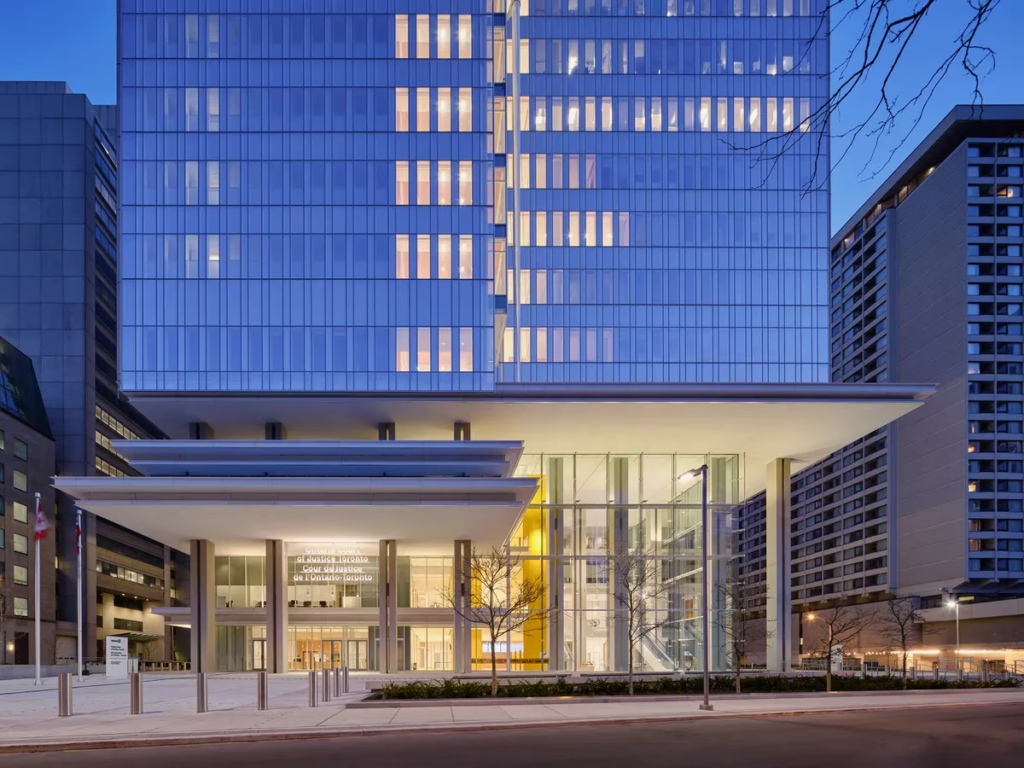
For too long, we’ve ignored the infrastructure of justice. Now, our court system is on fire
DAVID BUTT
PUBLISHED YESTERDAY
David Butt is a Toronto-based criminal lawyer.
Nobody walks into a home and oohs and ahhs about the electrical wiring. It’s stuff like the furniture and the kitchen counters that get the applause. But the boring old wiring can burn the place down instantly if it’s faulty and left uninspected. It cannot be neglected.
And now, Toronto’s brand-spanking-new billion-dollar courthouse is on fire, metaphorically speaking.
The Globe and Mail’s Sean Fine reports that courtrooms in the Ontario Court of Justice are closing by the bucketful because of staffing shortages. Trials are being delayed, and at risk of being thrown out altogether owing to unreasonable delay. What was supposed to be a criminal justice showpiece is now fully ablaze. And it’s because our creaky justice system – the electrical wiring of good governance in our society – has been left to moulder, tucked away from view.
The processes of the justice system – the thousands of trials and pleas handled by the courts every year, but also the diligent work done by court reporters, clerks and administrative staff – are largely invisible, and the general public doesn’t know much about it or give it much thought. Schools, roads, hospitals – the infrastructure we encounter regularly – these are the furniture and kitchen counters, and if they are substandard, we notice and complain. That’s important, because politicians listen to complaints, and direct money accordingly. When money is scarce (and it always is), it is not usually directed to things that don’t get much attention. Thus, what appears on the surface to be responsible democracy in action – politicians listening to the people – actually produces irresponsible governance. And so we routinely neglect our essential yet mostly invisible justice systems, until something catches fire.
The criminal justice system’s invisibility problem will never go away. Very few people, as a percentage of the total population, are unlucky enough to get caught up in it. And nobody would care much to trumpet the good news that scarce public funds were giving fair trials to those accused of doing terrible things: that wouldn’t rise to the level of a bragging point, much less a political talking point. But invisibility and irrelevance are two very different things; without prompt and fair trials, justice itself is at risk. And until political actors recognize this distinction, situations such as the Toronto courthouse crisis will continue to flare up with distressing regularity – and with heartbreaking outcomes for victims and their loved ones, who are denied justice.
It would be an oversimplification to say the staffing problems at the new Toronto Courthouse are explained entirely by neglect, of course. Bad timing and a failure of imagination also play a role.
The Ontario Court of Justice was conceived as a replacement for smaller, outdated facilities in Scarborough, Etobicoke, North York, and a few downtown locations. But sadly, the new courthouse, an architecturally striking monument to geographical consolidation, was constructed during the pandemic. The timing couldn’t have been worse: as a global crisis inspired us to harness technology in the name of decentralization, transforming hidebound concepts of geographically fixed workplaces, the Ontario government was essentially creating a monument to the 19th-century conception of the justice system, which had transitioned from in-person traditions to virtual trials. Now, with people required to show up in court as they did before the pandemic, courthouse workers who once enjoyed short commutes in Scarborough, Etobicoke, or North York have had their work-life balance disrupted by the need to commute downtown with no extra pay or benefit – and many have quit as a result.
There is no way back. Building new courthouses in North York, Etobicoke and Scarborough is a non-starter. But there is also no way back to blithely accepting a rigid pre-pandemic conception of justice – that it must be forever dispensed by gathering every justice participant in the same room for every case, all the time.
Far too many people in the justice system held their breath during the pandemic, and saw all those virtual trials as a stop-gap to be endured until the old 19th-century model could return in all of its timeless glory. That was an enormous failure of imagination. We made it through the pandemic, but it remade us as well. What it means to do important things in person, and when direct human contact is essential and when it is not, have become far more complicated and nuanced questions in the past three years. The justice system, for all its vaunted importance and grand traditions, simply cannot afford to stifle those questions with 19th-century bromides about in-person trials all in one place. Otherwise, more fires will break out like the one burning in Toronto right now.
See insights and ads
Like
Comment
Share